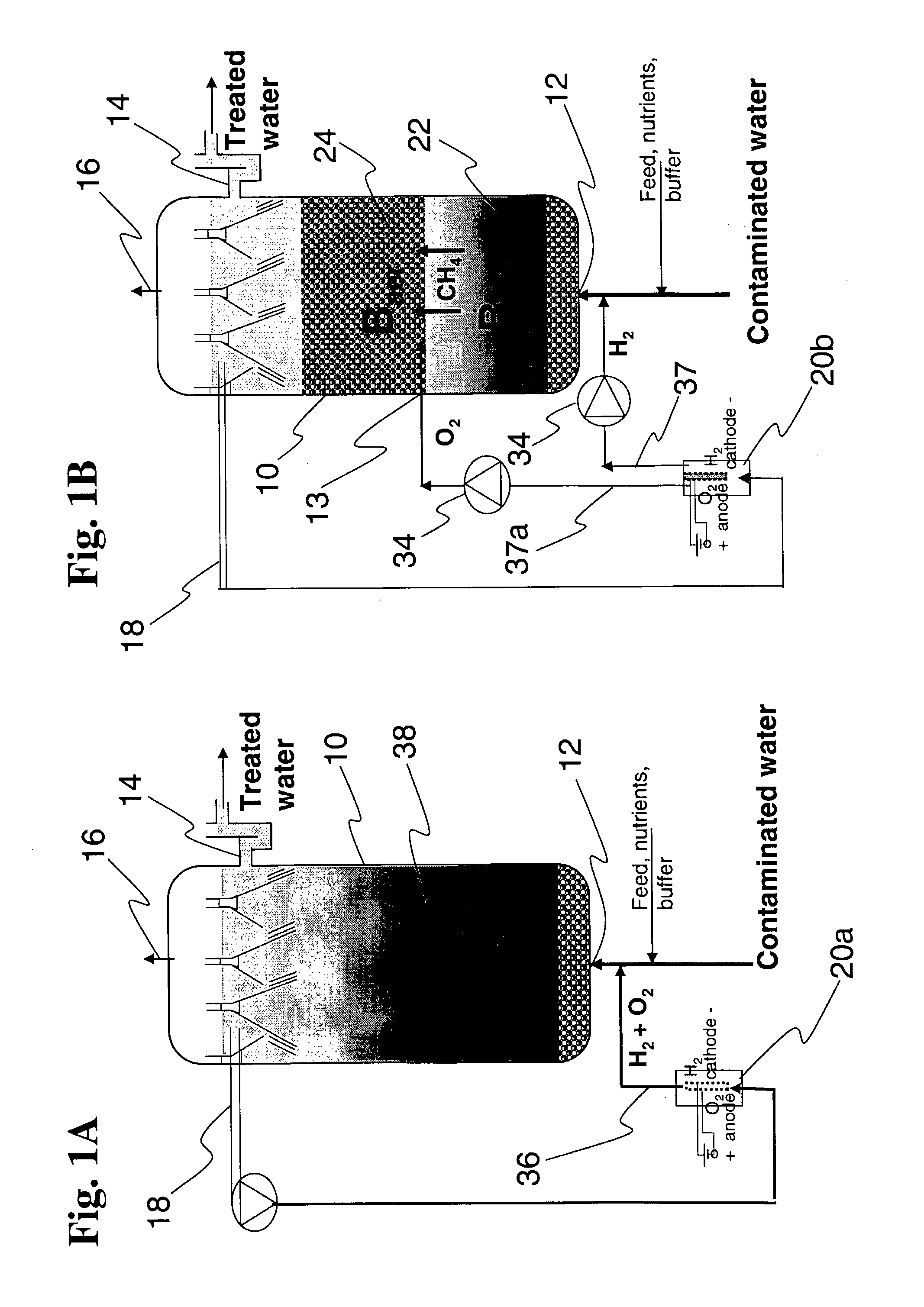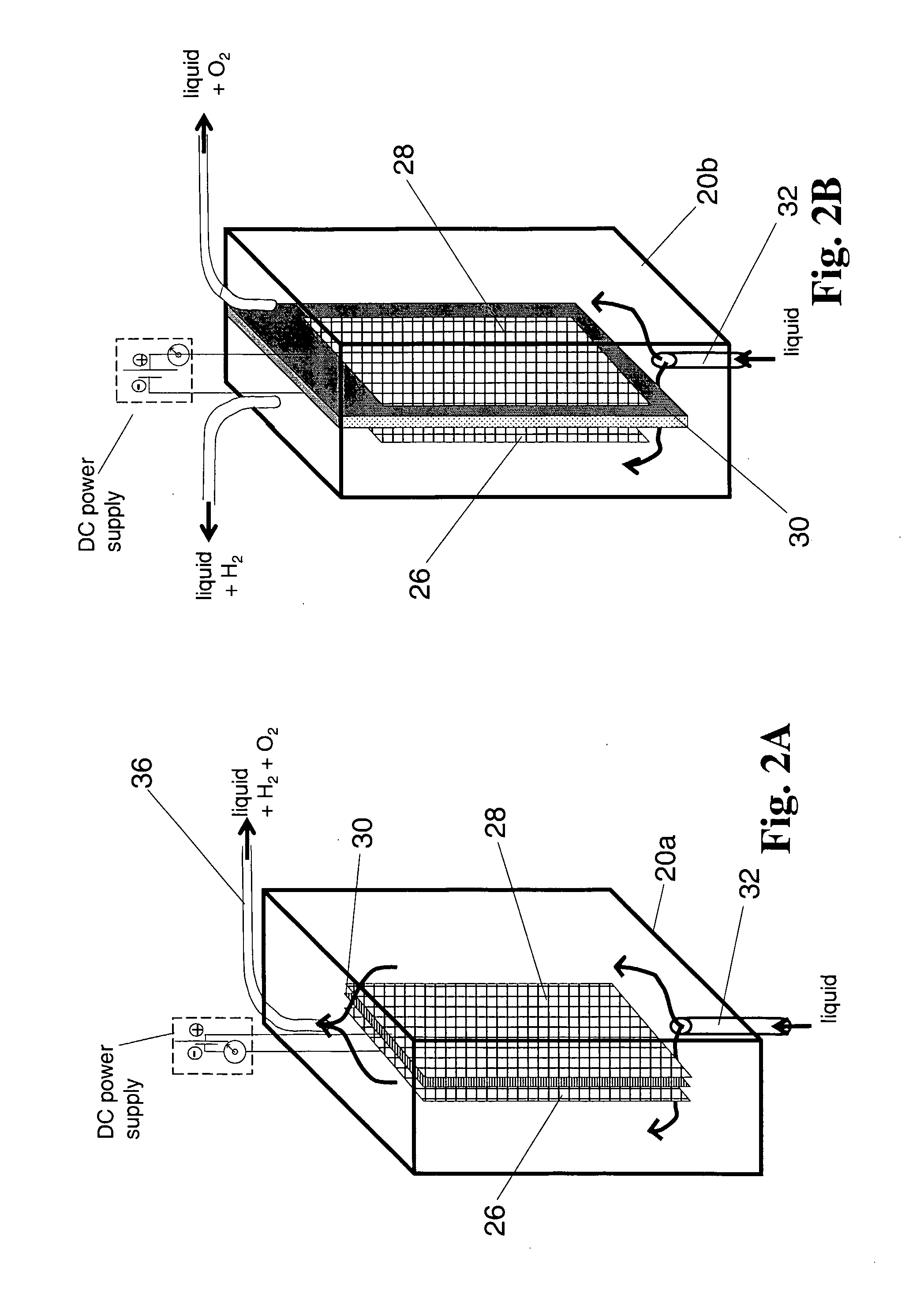Bioelectrolytic Methanogenic/Methanotrophic Coupling for Bioremediation of Ground Water
- Summary
- Abstract
- Description
- Claims
- Application Information
AI Technical Summary
Benefits of technology
Problems solved by technology
Method used
Image
Examples
Embodiment Construction
[0046] According to the present invention, we propose a bioremediation method which couples activities of aerobic and anaerobic microorganisms for the biodegradation or mineralization of chlorinated organics, more specifically methanotrophic bacteria for the group of aerobic bacteria and methanogenic bacteria, for the group of anaerobic bacteria, by engineering methanogenic / methanotrophic biofilms (by methanotrophic selective enrichment of methanogenic nuclei, as seen in FIGS. 1a and 4, under accurate oxygenation control) and develop a single-stage bioprocess, capable of faster and more complete degradation of chlorinated contaminants (namely PCE, TCE, TCA, TCP), as compared to conventional systems. With respect to degradation of PCE and TCE, reductive conditions, provided by the methanogenic bacteria, allow for the first steps of transformation (dechlorination) which are non-specific and relatively fast. With respect to degradation of TCE and derivatives, methanotrophs are of prime...
PUM
 Login to View More
Login to View More Abstract
Description
Claims
Application Information
 Login to View More
Login to View More - R&D
- Intellectual Property
- Life Sciences
- Materials
- Tech Scout
- Unparalleled Data Quality
- Higher Quality Content
- 60% Fewer Hallucinations
Browse by: Latest US Patents, China's latest patents, Technical Efficacy Thesaurus, Application Domain, Technology Topic, Popular Technical Reports.
© 2025 PatSnap. All rights reserved.Legal|Privacy policy|Modern Slavery Act Transparency Statement|Sitemap|About US| Contact US: help@patsnap.com



